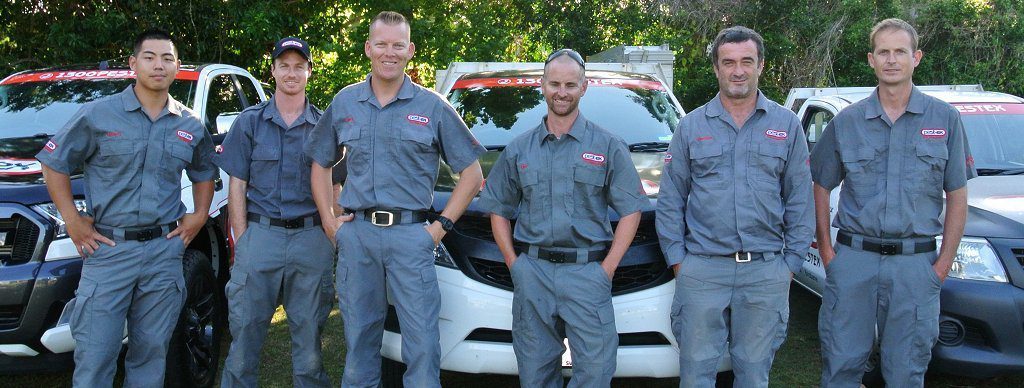
Got a Pest Problem? Call Us Today →

“We’ve just received a recommendation to install a termite barrier to protect our home. Before going ahead, could you please tell me how it will last?”
 Fantastic question Janet, and one that’s certainly worth asking. There’s a few factors that you need to take into account, which I’ll cover here.
Fantastic question Janet, and one that’s certainly worth asking. There’s a few factors that you need to take into account, which I’ll cover here.The life expectancy of any given termite treatment varies depending upon the treatment type applied, chemicals and materials used, and who performs the actual install. Belive it or not but termite barrier preparation is key to a long lasting termite barrier.
10 or 20 years ago homes were constructed with what’s called an “under-slab” termite barrier. The chemicals used were cheap and usually only lasted up to one year as building firms wanted the certificate and were not to fussed about the life expectancy of the chemical. Standard building practices dictated that when builders laid a slab they were required to install an under-slab barrier. Unfortunately, builders called upon random pest companies who gave the cheapest quotes that only provided customers with a one-year warranty. These pest companies then provided a quick spay before the slab was laid in order to satisfy the building regulations.
Thankfully a lot has changed since then.
Advances in termite prevention technology have seen the formulation of high-quality products such as the Termidor barrier. Termidor at full strength (which is 10 litres per linear metre) covers an average house of 70 linear metres. This means 700 litres of this product is required to perform a perimeter termite barrier for most homes. A barrier like this will last up to eight years.

Termidor is currently considered the best product on the market and while there may be cheaper alternatives, they often have a shorter life expectancy. 10 years ago, the use of certain chemical brands followed a popularity trend but with the technological advancements in pest control techniques, education, equipment and research, products have become more efficient, more effective and less harmful on the environment.
Between 2001 and 2004 legislation changed and the building code stipulated that you couldn’t use a chemical treatment on a new house build unless it was replenishable, in other words, chemicals could be re-added over time to ensure it remained effective. This was a costly option for builders, which led to the more suitable physical termite barrier.

A physical termite barrier is a plastic barrier that is laid out around the perimeter of the house during construction, against the brickwork. Physical barriers are a compulsory part of the building code of practices and applicable to all homes built after 2001. These particular systems last for 20 years. This might sound great in theory, but unfortunately, what is often misunderstood about physical barriers are that they’re simply a piece of plastic acting as a deterrent.
As you can see in the above picture one small crack in the slab and termites are in! A perimiter termite barrier using a product like termidor is designed to affect and eliminate the termite colony as they travel through the soil towards the home.
While a physical termite barrier reduces the risk, and is certainly better than having no barrier at, it’s not as effective as a chemical barrier – simply because chemical barriers are designed to kill off the termites completely.
Termite bait stations are a lot different to physical and chemical barriers in the sense that they’re designed to act as early warning indicators. In other words, they’re placed around the yard in a way that gives the home owner a chance to act before any potential damage is done to the home.
Termite bait stations usually need to be checked and replenished at least monthly. When active termites are found a bait using an insect growth regulator is added to eliminate the colony close to the home. Termite bait systems are a great way to protect your home but usually only suited for homes on sloping sites.
While you might hear about products on the market that have longer life expectancy rates of 10 years etc, most of it is misleading and inaccurate. For eg, Bifenthrin has a longer life expectancy, but unlike Termidor, it acts as a repellent. Termites detect products like bifenthrin in the soil and will simply avoid it, rendering it useless. When this happens, termites will simply work around the product and make their way into your home.
For this reason, Pest Ex relies on a quality product such as Termidor because of its effectiveness. Termites can’t detect it, which is great because termites will actively pass through the chemical, then return the product back to the main nest through the grooming procedure – which results in complete colonies being eliminated. This is why Termidor is so highly regarded in the pest control industry.
The cost of a termite treatment varys depending on physical termite barriers or chemical termite barriers or even termite baiting systems. Each home is different so its important to book a free site visit to asses your home type and land layout so the right recommendation can be made.

If you’re experiencing a termite problem, or you’re considering having a barrier installed, get in touch. We have a team of expert technicians servicing Brisbane and the Gold Coast who have a wealth of knowledge and experience, so feel free to give us a call we can help you.
We guarantee our workmanship and pride ourselves on providing quality long lasting treatments.







